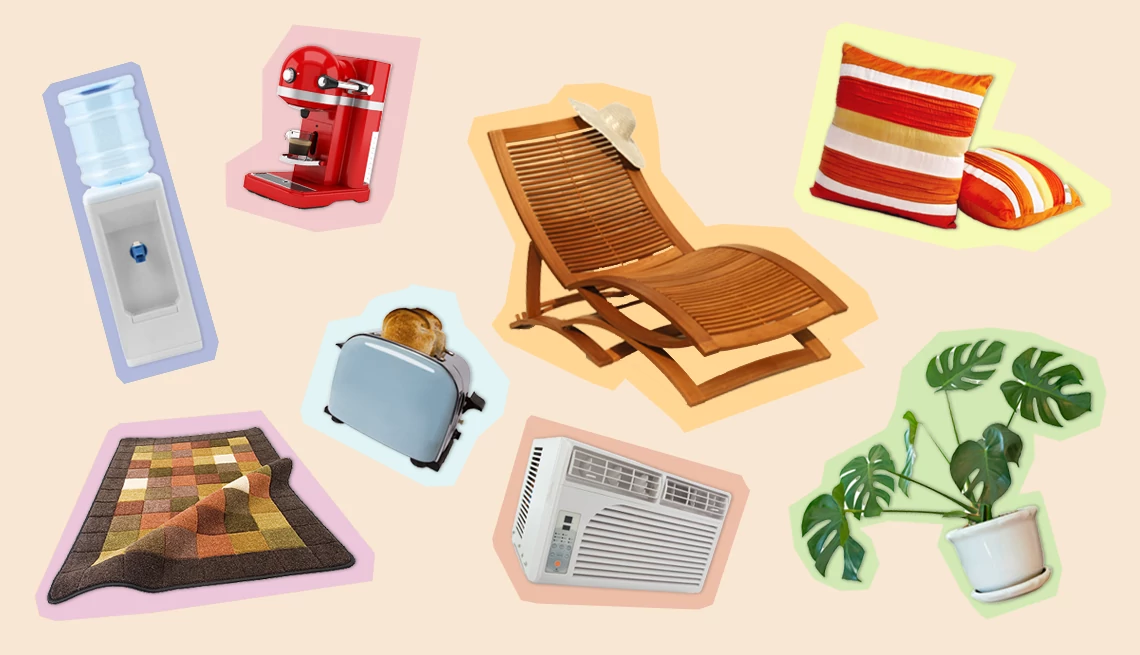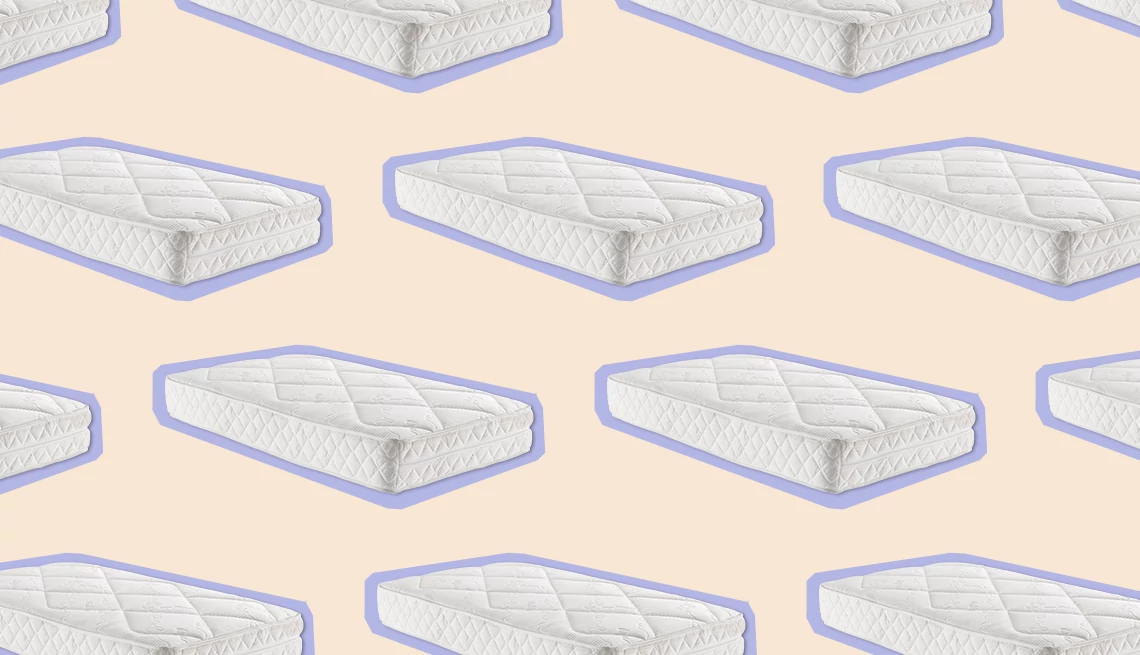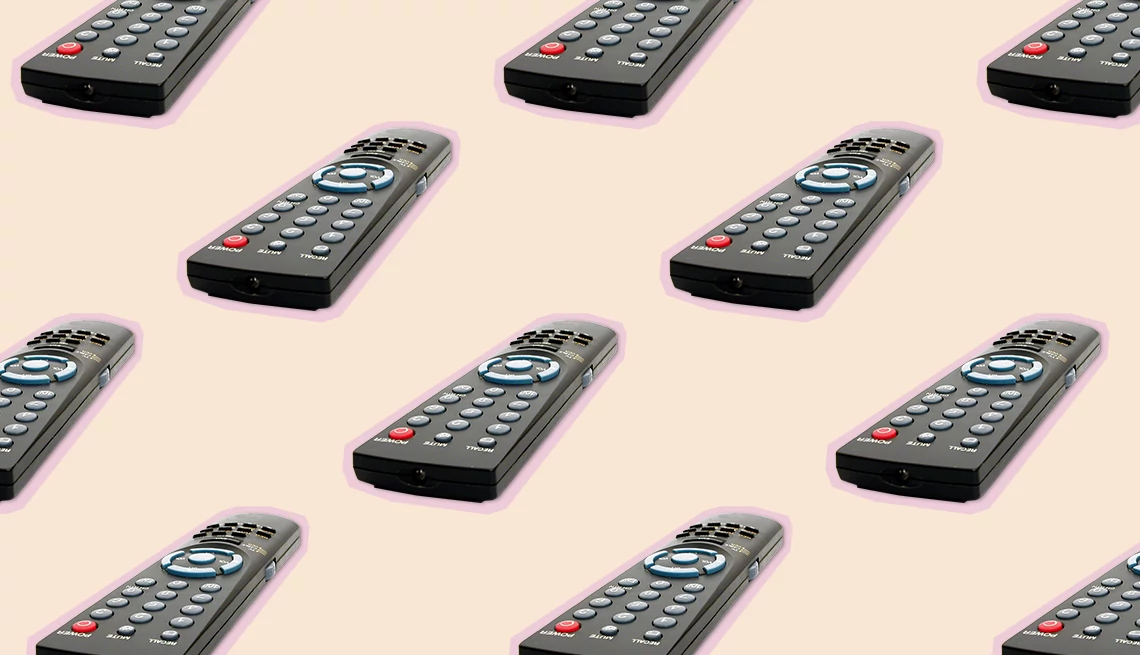AARP Hearing Center


Washing windows, dusting behind the furniture, cleaning appliances and laundering linens are at the top of many people’s seasonal cleaning to-do list, according to an American Cleaning Institute survey. But don’t forget these 16 often overlooked (but essential) cleaning locations to really get your home sparkling clean.
1. Under appliances
You know that cleaning up spills and tossing outdated foods in the refrigerator helps prevent mold, mildew and odors, and scouring the oven reduces the risk of fire. Don’t forget to clean under the appliances too.
"Throughout the year, dust accumulates on the floor and in the cracks and crevices on the back of appliances," says Katie Barton, who's in charge of cleaning content for the home design ideas website homedit.com. Barton advises pulling out the refrigerator and using the crevice tool on the vacuum to remove dust from the floor, walls, back and sides of the fridge, including the refrigerator coils. Take a similar approach to cleaning behind the stove; if it's secured in place, remove the drawer and use the vacuum to clean underneath the appliance. An all-purpose cleaner and microfiber cloth are perfect for cleaning the floor under appliances, Barton adds.
2. Refrigerator water dispensers
After you clean beneath the fridge, tackle the water dispenser.
"Between the moisture from the dispenser and mineral buildup, [water dispensers] can easily become home to mold and bacteria," says Michael Rubino, mold and air quality expert and founder of HomeCleanse, a home air purification company. "These areas can get incredibly dirty without proper cleaning."
Your refrigerator manual will offer step-by-step instructions for cleaning the water dispenser. The instructions might include turning off the water dispenser and ice maker and pulling out the removable pieces before cleaning. Spray the unit with white vinegar and wipe it down with a microfiber cloth; a toothbrush can be used to get into the crevices; rinse with warm water and allow the dispenser to dry before turning on the water and ice maker.
3. Fake plants
Your faux ficus may look nice but Barton calls artificial plants "hot spots for dust accumulation." She suggests dusting the leaves with a microfiber cloth and then spraying them with an all-purpose cleaner, wiping each one clean.
4. Throw rugs
Rugs can trap dust mites, pet dander, mold spores, dirt, dust and other allergens, even if you vacuum regularly.
During spring cleaning, Barton advises vacuuming and spot-treating stains with a commercial cleaner — available for rent at big-box home improvement stores. Prefer a gentler alternative? Barton suggests using a mixture of dish soap and water to treat minor stains. Sprinkling a liberal amount of baking soda and allowing it to sit for a few hours, then vacuuming it up will help absorb odors, she adds.
Washable rugs, available in a huge variety of colors, patterns and price points, are another option. Simply toss them in the washing machine and let the detergent, warm water and spin cycle do the work.


5. Air-conditioning filters
Unlike refrigerators and cars that have warning lights when it’s time to change the filters, the air-conditioning unit doesn’t have an alert, which makes it an oft-overlooked spring cleaning task. It’s important to replace the filter before turning on the AC for the season.
"Air filters allow the system to cleanse the air and recirculate clean air back into your indoor environment," Rubino says. “It’s important to check these filters to ensure they’re not overly dirty, especially during spring when airborne pollutants are high."
To clean the filter, follow the instructions in the manual. Rubino notes that general steps often include turning off the unit, removing the cover and the old filter, vacuuming the interior to remove dust and debris, installing a new filter, replacing the cover and turning the unit back on.
6. Patio furniture
It won't be long before you'll be hosting alfresco dinners and spending sunny afternoons outdoors again. First, you'll need to clean the outdoor furniture that’s been in the garage all winter.
"A pressure washer removes dirt and mildew, making the furniture look new," Barton says. You can rent a pressure washer from a big-box hardware store to clean heavy-duty plastic or composite furniture. For wood and other lightweight and delicate materials, Barton suggests a gentler approach: A scrub brush, dish soap, garden hose and some old-fashioned elbow grease will do the trick. You can use the same mixture to scrub outdoor cushions — remember to let them dry before putting them on the furniture, she says.
7. Window screens
Cleaning the windows is one of the top spring cleaning tasks, but it’s a waste of time if you forget to clean the screens too.
"A dirty screen can be the worst enemy if your windowpanes are sparkling clean," says David Flax, president of Window Genie, a window cleaning company. "When it rains, rain passing through a dirty screen will transfer dirt and debris onto your glass, instantly making your windows dirty again."
Remove the window screens, gently brush them with a dry brush, and then rinse them with a hose. Remember to brush gently in both directions and on both sides of the screen to remove all of the dirt, Flax advises. To prevent water from dripping onto the window sills, let the screens air-dry before hanging them back up.
"Make sure you keep the screens in the right order so you don’t forget which windows they belong to," Flax adds. "Sometimes the house settles, and the screens may not fit into other frames."
8. Pillows
Dust mites are one of the most common causes of allergies, according to the American College of Allergy, Asthma & Immunology, and your pillow could be crawling with them. Washing pillows is a household chore that’s often overlooked, according to Marla Mock, president of Molly Maid.
"We recommend that you wash your pillows twice a year," Mock says. "If you live in a warm climate, we recommend washing your pillows four times a year."
Check the tags for washing instructions. Many pillows can be tossed in the washing machine with mild liquid detergent and put in the dryer on low heat. Mock suggests washing two pillows at the same time, which helps balance the load and minimizes lumping, and adding two tennis balls to the dryer to loosen clumped-up stuffing.
Foam pillows can’t go into the washer. Vacuum the pillows and spot-clean them with a damp rag or hand wash them, adding a few drops of your favorite liquid detergent to a large sink, submerging the pillow for 10 minutes and massaging it gently to help the detergent seep in, Mock advises. Then rinse with warm water, wring it out and let it dry before putting the pillowcase back on.
9. Coffee maker
Cream and sugar might not be the only things you’re adding to your morning coffee. Cleaning your coffee maker won’t just prevent illness — it will also improve the flavor of your daily cup of joe.
"When you use a coffee maker daily, mineral deposits build up inside from your water," says Lisa McManus, executive editor at America's Test Kitchen Reviews. "Over time it acts like a blocked artery; the tubes narrow and the coffee maker gets slower and slower, which makes your coffee taste worse.”
Descaling your coffee maker removes mineral deposits and bacteria. Aim to descale your machine after every 100 pots of coffee. McManus suggests using packs of 100 filters as a reminder; when the package is empty, it's time to clean. Skip the vinegar and water, which can be too corrosive and might not work effectively. Instead, McManus suggests using gentle, commercially available descaling products.
"Put the powder in with water and run it through the coffee maker and then run a few brew cycles with just clean water to remove the descaling product," she says.































.jpg?crop=true&anchor=13,195&q=80&color=ffffffff&u=lywnjt&w=2008&h=1154)

































You Might Also Like
What to Look for Before Buying a Newly Built Home
From how to vet the builder to what to watch for in the contract, here’s how to protect yourself
Couple Captures the Charm of Their Old Farmhouse by Rebuilding in Its Footprint
What happens when your forever home is literally falling around you? You recreate that magic — with new construction
AARP Smart Guide: 41 Ways to Care for Your Home Appliances
Protect your wallet by doing these simple things to make your appliances work better and last longer